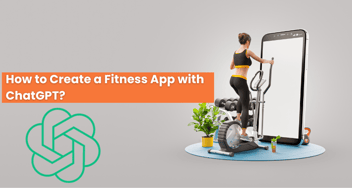AI Chatbots: The Answer to the Healthcare Workforce Crisis
AI Chatbots are emerging as a solution to the healthcare workforce crisis. These intelligent virtual assistants can provide support, answer queries, and offer personalized healthcare information. By automating certain tasks, they alleviate the burden on healthcare professionals and improve efficiency, ultimately transforming the healthcare industry.

The resource deficiency in the healthcare industry is not new. According to a study by the Institute for Health Metrics and Evaluation (IHME) at the University of Washington’s School of Medicine, the world needs 43 million additional health workers to meet the universal health coverage target.
The deficiency has created challenges, long wait times, limited availability of healthcare professionals, and difficulties in finding reliable medical resources for people, compromising their and their loved one’s health.
Our team of experts thought of creating a healthcare chatbot/virtual assistant to address the situation. This chatbot leverages the power of OpenAI API and React to provide on-demand support and guidance to users.
The purpose of the Healthcare Chatbot
The healthcare chatbot is built with two objectives:
- Improve Patient Engagement: Increase patient engagement by providing a user-friendly and interactive chatbot interface that encourages patients to participate in their healthcare journey actively.
- Enhance Access to Information: Ensure patients can access accurate and reliable health information by developing a chatbot that provides personalized and relevant information based on their needs and preferences.
Prerequisite of building the Healthcare Chatbot
To build a HealthCare Assistant like this, the team needed
- React set up on your machine.
- OpenAI API access token to make API requests.
- Necessary packages installed in your React project, such as OpenAI, Axios, React-bootstrap, etc.
How does the Healthcare Virtual Assistant Work?
Let us discover how the team integrated ChatGPT, powered by OpenAI, into a real-time HealthCare Assistant.
ChatGPT, being an advanced language model, played a significant role in generating code
snippets for various components, including widgets, models, and API calls, to streamline the development process.
We used its capabilities to extract healthcare-related information for every disease. The responses generated by ChatGPT are translated into Hindi, English, and Punjabi to cater to a broader audience.
Here is a step-by-step breakdown of the process required to achieve this integration.
Integration Steps:
Step 1: Set Up the ChatGPT API Integration
- Obtain an API access token from the OpenAI platform.
- Create a helper class or API wrapper to handle API requests and responses.
- Implement the necessary methods to interact with the ChatGPT API, including tokenization, making API requests, and handling API responses.
Step 2: Retrieve Health Information for Specific Medical Conditions
- User Input: Users can interact by typing or speaking into the microphone about their medical condition in the chatbot interface.
- API Request: It sends an API request to the backend, specifying the user's query and requesting relevant health information.
- Backend Processing: The backend server receives the API request and processes it.
- It utilizes ChatGPT's capabilities to generate accurate and informative responses based on the provided medical condition.
Step 3: Translate the Responses to Hindi and Punjabi Language
- Integrate a translation service or package into your React app, such as the Google Translate API or a third-party translation package.
- Retrieve the response from ChatGPT in the default language (usually English).
- Make an API request to the translation service, translating the response from English to Hindi or Punjabi.
- Process and display the translated response in the user interface, ensuring proper localization and formatting.
The Result
Through this intelligent integration, the team built an efficient healthcare chatbot, a personalized healthcare solution available 24/7, empowering individuals to take control of their health and well-being.
With just a few taps on their devices, patients can engage in real-time conversations with the chatbot, gaining access to accurate medical information, symptom checking, appointment scheduling, medication management, and more.
- Inbuilt with Intelligent Symptom Checking and Diagnosis: Intelligent symptom checking and diagnosis enables the healthcare chatbot to provide users with accurate and reliable guidance regarding their health concerns. The chatbot analyzes the user's symptoms using advanced algorithms and medical knowledge and offers potential diagnoses or recommendations.
- Through natural language processing (NLP), the chatbot understands and interprets user descriptions of symptoms, enabling a conversational and intuitive interaction. Users can describe their symptoms in their own words, and the chatbot intelligently processes the information to identify potential causes or conditions related to the symptoms.
- Empowering Users with Medical Information and Education: Our chatbot is a valuable educational resource, offering information on various health conditions, treatments, medications, and preventive measures. Users can access this information anytime, anywhere, simply by conversing with the chatbot.
- By promoting health literacy, our chatbot empowers users to take an active role in managing their health. It equips them with the knowledge to engage in meaningful conversations with healthcare professionals, asks informed questions, and make well-informed decisions about their healthcare journeys.
- Provides a Judgment-free Zone For Patients: The healthcare assistant chatbot prioritizes user privacy and confidentiality. Users can confidently share their health information, knowing it is handled securely and under privacy regulations. This trust and assurance help build strong relationships between users and the chatbot, ensuring continued engagement and usage.
- Medication and Diet Suggestions: The healthcare assistant chatbot can offer personalized medication and diet suggestions besides disease analysis. The chatbot can recommend appropriate medications and dietary adjustments by considering the user's medical history, allergies, and current symptoms. These suggestions can help users manage their conditions more effectively and promote a healthier lifestyle.
- Continuity of Care: The healthcare assistant chatbot can be a valuable companion throughout a user's healthcare journey. It can store and recall previous conversations, enabling continuity of care and ensuring users receive consistent guidance and recommendations. This feature fosters a sense of trust and reliability in the chatbot as a reliable healthcare resource.
- Recommending the Best Doctors and Hospitals: One of the valuable features of the healthcare assistant chatbot is its ability to recommend the best doctors and hospitals in a user's local area. The chatbot can provide information on top-rated healthcare professionals and facilities by integrating with local healthcare directories and leveraging user reviews. Users can easily find and connect with trusted healthcare providers, saving time and effort in their search for quality care.
The healthcare assistant chatbot created with React JS can potentially transform how individuals access healthcare information and services. Its chat functionality allows for interactive conversations, while its disease analysis feature provides preliminary insights into health conditions.
Moreover, the chatbot's medication and diet suggestions empower users to make informed decisions about their well-being.
Lastly, by recommending the best doctors and hospitals, the chatbot enhances access to quality care in the user's local area. With these powerful features, the healthcare assistant chatbot is revolutionizing the healthcare landscape, making healthcare more accessible, convenient, and personalized for all.













